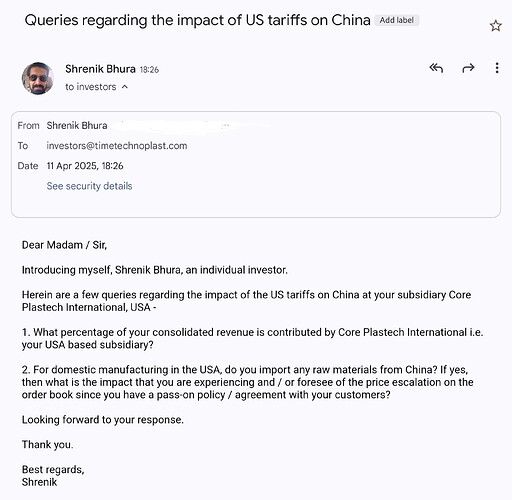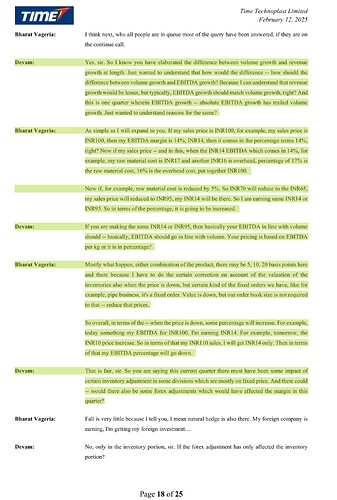Some quick answers from Gemini AI bot -
To understand the raw materials used by Core Plastech International for their Intermediate Bulk Containers (IBCs), we first need to consider the general materials used in IBC manufacturing. IBCs are typically made from a combination of materials to provide structural integrity, chemical resistance, and ease of handling.
Common Raw Materials for IBCs:
- High-Density Polyethylene (HDPE): This is the primary material for the inner container (bottle) of most composite IBCs. HDPE is chosen for its excellent chemical resistance, durability, and suitability for blow molding.
- Galvanized Steel: Used to construct the outer cage that provides structural support and protection to the inner plastic container. Galvanization prevents corrosion.
- Polypropylene (PP): Sometimes used for components like valves and fittings due to its chemical resistance and strength.
- Steel (various grades): For rigid IBCs, stainless steel (304 or 316/316L) or carbon steel can be used for the entire container.
- Composite Materials: Combinations of steel and plastic are also used to leverage the benefits of both.
- Sealing Materials: Elastomers like EPDM (ethylene propylene diene monomer) or FPM (fluorine rubber) are used in valves and closures to ensure leak-proof sealing.
Raw Materials Used by Core Plastech International:
Core Plastech International, as a subsidiary of Time Technoplast Ltd., likely utilizes similar raw materials for their IBCs, focusing on composite IBCs with an HDPE inner bottle and a steel cage. Their product range includes “GNX composite intermediate bulk container (IBC)”. Based on the general knowledge of IBC manufacturing and Core Plastech’s likely focus:
- HDPE granules: For blow-molding the inner, chemically resistant container.
- Steel tubes and sheets: Likely galvanized steel, to fabricate the protective cage structure.
- Polypropylene (PP) or HDPE: For manufacturing valves, spouts, and other fittings.
- Sealing materials (EPDM, FPM, or similar): For ensuring the integrity of closures and valves.
Sourcing of Raw Materials from China:
Information specifically about Core Plastech International’s raw material sourcing from China is limited in the provided search results. However, we can make some inferences:
- Time Technoplast Ltd. has a global presence: The parent company, Time Technoplast Ltd., has manufacturing facilities in over 11 countries. This suggests a potentially diverse supply chain for raw materials.
- General Global Sourcing: It’s common for manufacturing companies to source raw materials globally to optimize cost and availability. China is a major global supplier of plastics and steel.
- Indirect Evidence: One search result indicates that Core Plastech International Inc. has imported shipments from India and Singapore. This shows they do import materials, but doesn’t specify if they import from China. Another result mentions a Chinese supplier of PE film.
Based on the available information, it’s difficult to definitively state how many of the raw materials used by Core Plastech International are sourced from China. While it’s plausible that they source some materials like HDPE granules or steel components from China, the exact number and proportion cannot be determined without specific sourcing data from the company.
To get a precise answer, you would need to contact Core Plastech International directly or consult their official reports and disclosures regarding their supply chain.
Have written to the investor relationship team requesting an answer -
This query has been answered in detail with examples and explanations multiple times in the last concall. Please refer to that. Am attaching a snapshot below for quick reference -


